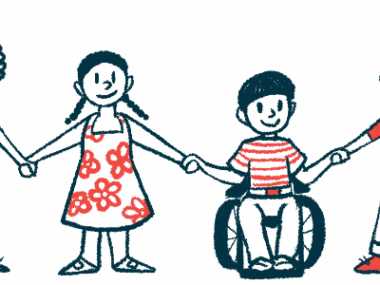Case study underscores ‘diagnostic challenges’ in Cushing’s children
Boy, 7, was first seen at a clinic after experiencing weight gain the previous year
Written by |

Diagnosing and managing Cushing’s syndrome in children can be complex and takes careful management, according to a case report and review study that described the difficult diagnostic process for a boy who was ultimately found to have Cushing’s disease that could be managed through surgery.
“Our case was illustrative of the diagnostic challenges that can face the clinician when evaluating a child with suspected [Cushing’s syndrome],” the researchers wrote. “The management of the case and its complexities underline the need for children with [Cushing’s syndrome] to be managed in a center with experienced pediatric endocrinologists and skilled neurosurgeons both for their initial diagnosis and treatment as well as for their long-term follow-up and management.”
The study, “Diagnostic and management challenges in paediatric Cushing’s syndrome,” was published in Clinical Endocrinology.
Cushing’s syndrome is an umbrella term for conditions that feature chronic elevations in the hormone cortisol. In Cushing’s disease, a benign tumor on the brain’s pituitary gland typically leads to the excessive production and release of adrenocorticotropic hormone (ACTH), which then signals the adrenal glands atop the kidneys to make more cortisol. Less often, Cushing’s can be caused by ACTH-producing tumors outside the pituitary gland, which is known as ectopic Cushing’s.
Cushing’s syndrome, while a relatively rare disease, is rarer still in children and is most often caused by steroid medications. Its presentation in children and adolescents can be substantially different from that in adults and may require different management strategies.
Finding a source for Cushing’s
Here, scientists described the complex diagnosis and treatment of a 7-year-old boy with Cushing’s, and reviewed the available literature on how to manage it in pediatric populations.
The boy came to the clinic after experiencing weight gain over the previous year and changes in his face consistent with Cushing’s, including facial rounding, acne, along with puffiness and redness, called facial plethora. He also had an increased appetite, loss of energy and exercise capacity, as well as anxiety and sleep issues. The doctors identified other hallmark features of Cushing’s, including a buffalo hump, which is a buildup of fat between the shoulder blades, and fat around the abdomen.
Lab tests showed dysregulated cortisol consistent with Cushing’s and a tumor on the pituitary gland, which would typically indicate Cushing’s disease. While other biochemical tests were consistent with Cushing’s disease, others suggested an ectopic source of ACTH.
Additional imaging tests revealed a mass in his abdomen, which researchers suspected was likely producing and releasing ACTH and causing the boy’s Cushing’s. However, even after the mass was removed, the boy continued to have high cortisol and worsening symptoms. An examination of tissue from the mass suggested that it wasn’t the source of ACTH.
The boy was started on medications to control his cortisol. A new round of testing a year later showed the likely cause of excess ACTH was the pituitary gland.
The change in the laboratory tests highlights the importance of repeat evaluations when the results aren’t clear, the researchers said. “Biochemical testing may not offer a diagnostic answer immediately and therefore bears repeating at regular intervals when [Cushing’s syndrome] is clinically suspected,” they wrote.
The pituitary tumor was removed and the boy achieved remission with cortisol and ACTH levels dropping and his associated symptoms easing. He remained on glucocorticoids for two years to manage some ongoing suppression of pituitary signaling that resulted.
Since surgery is the first-line treatment for Cushing’s disease, it’s essential to choose a pituitary surgeon with experience in this area, the researchers emphasized.
“Pediatric [Cushing’s syndrome] is a rare disorder and one that is challenging to diagnose and manage,” wrote the researchers, who noted “patients managed in experienced units have a good prognosis.” Still, even after curative surgery, children should be monitored for possible ongoing issues, such as growth problems, disturbed pituitary function, and psychological or social problems.






